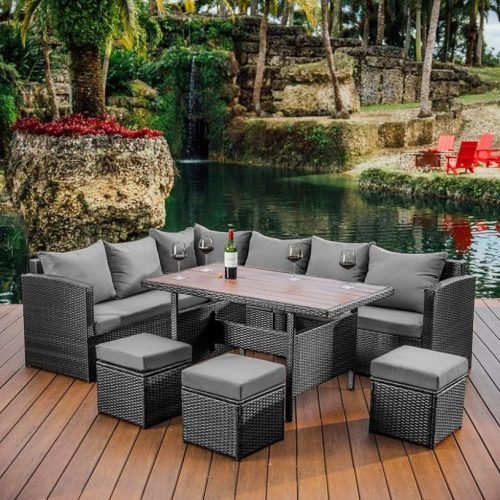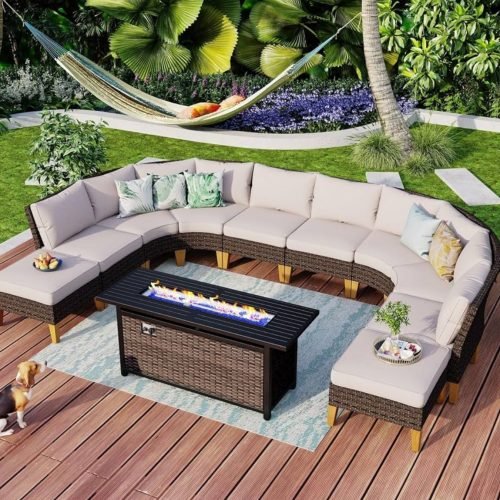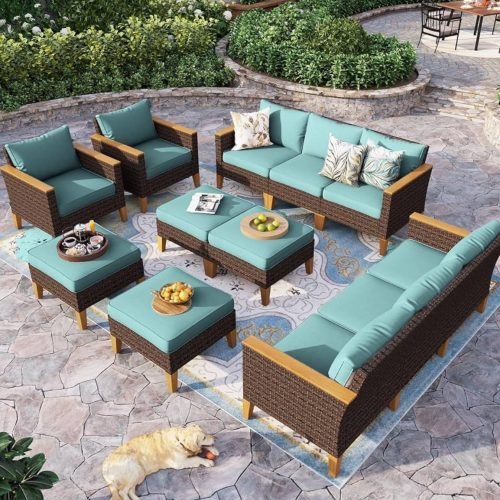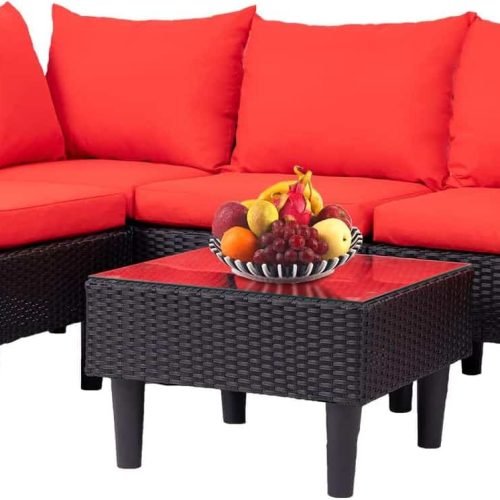What’s going on guys? It’s JV Charles. Did you know that vegetables need 6-8 hours of sunlight a day to grow well? This might seem tough, especially in urban areas with limited space. But don’t worry! Even a small 6′ x 6′ area can be enough for a garden using smart methods like vertical gardening and growing different plants together.
A 20′ x 25′ garden can give a family of four enough veggies for the summer. By using urban gardening tips, we can make the most of small spaces. This means we can grow food on balconies, patios, and even windowsills.
One important thing to remember when growing veggies in small spaces is to use vertical gardening, raised beds, and containers. Also, by planting seeds continuously and picking the right crop, we can get more food. Urban gardening tips make it easy to turn small areas into green spaces full of herbs and veggies.
Key Takeaways
- Vegetables need 6-8 hours of sunlight daily to thrive.
- A 6′ x 6′ plot can be very productive for urban gardeners.
- Vertical gardening and containers are great for small spaces.
- Raised beds and growing different plants together can make the most of small spaces.
- Picking crops that are expensive to buy helps get the most value.
Learning about urban gardening and how to use small spaces well can make any area a great place for growing veggies. Let’s explore the best methods and plants for a successful, efficient garden together.
Selecting the Right Location
Creating a successful vegetable garden in a small space means picking the perfect spot. By choosing the right location, we can make sure our gardens do well.
Utilizing Limited Sunlight
Sunlight is key for a garden to flourish. Most veggies need six to eight hours of direct sunlight each day. But, some like leafy greens and root veggies can grow in partial shade.
In cities, it’s important to place your garden where it gets the most sunlight. For container gardens, moving your pots to follow the sun helps get more light.
Ensuring Adequate Water Supply
Having a steady water source is crucial. A drip irrigation system is great for small gardens because it saves water by delivering it right to the roots. It’s also good for container gardens, making sure each plant gets enough water.
Choosing Fertile Soil
Good soil is the base of a healthy garden. Soil full of organic matter is essential for veggies to grow well and taste great. For city gardens, using top-notch potting mix or adding compost to the soil can really help.
Using containers, raised beds, or vertical gardens can also improve soil quality. These methods create better conditions for nutrients.
Planning carefully, from sunlight to soil, boosts our small garden’s success. It turns even small areas into lush, productive spaces.
Choosing the Best Gardening Methods for Small Spaces
Gardening in small spaces is challenging but rewarding. With the right methods, we can make the most of our limited space. Container gardening, vertical gardening, and balcony gardens are great for small areas.
Raised Beds and Containers
Raised beds and container gardening are great for small gardens. They let us control the soil quality, which is key in cities where the soil might not be good. We can move containers to get more sunlight or protect them from bad weather.
For container gardening, try plants like the Cherry Cascade tomato and Ping Tung Long eggplant. Edible flowers like nasturtiums, violas, and calendula also do well in containers. They add color and are useful in our gardens.
Vertical Gardening Techniques
Vertical gardening is a smart way to use space. Plants grow up instead of out, saving ground space. Plants like the Italian heirloom Trionfo Violetto pole beans and hot peppers like Black Hungarian are perfect for vertical gardens.
To do vertical gardening, use trellises, nets, or special planters. This method saves space and helps plants breathe better, which lowers disease risks.
Balcony and Windowsill Gardens
If you live in an apartment or don’t have a yard, balcony and windowsill gardens are great. They’re perfect for growing herbs, leafy greens, and small vegetables. Mesa Garden shows how versatile these small areas can be.
Fast-growing mesclun mixes and lettuce varieties like Little Gem do well in containers. Remember, these plants need more water because they have less soil. But with the right care, they can be very productive.
| Method | Benefits | Ideal Plants |
|---|---|---|
| Raised Beds & Containers | Easy soil control, movable for optimal conditions | Cherry Cascade Tomato, Ping Tung Long Eggplant |
| Vertical Gardening Techniques | Maximizes space, enhances airflow | Trionfo Violetto Pole Beans, Black Hungarian Pepper |
| Balcony & Windowsill Gardens | Utilizes available space, aesthetic appeal | Little Gem Lettuce, Mesclun Mix, Cherry Cascade Tomato |
How to Grow a Thriving Vegetable Garden in Small Spaces
Urban gardening can be tough with limited space. But with the right urban gardening tips, you can grow a great vegetable garden in small areas. Using plants made for small spaces is key. These plants grow well in little room and give lots of food.
Herbs like thyme, mint, chives, oregano, and bay leaf are great for small spaces. They grow well in pots or on windowsills and make food taste better. Also, there are over 80 types of basil, like Pistou, perfect for small gardens.
For veggies, choose compact varieties of your favorites. Cherry Cascades tomatoes are great for hanging baskets or raised beds. They produce lots of tomatoes. Rainbow chard is another good choice for small gardens because it’s easy to grow and looks nice.
Hot peppers like Black Hungarian work well in small areas. They grow up to 30-36 inches tall but fit in window boxes. They change color from green to black to red, making your garden look interesting.
Using vertical gardening techniques is another smart move. Plants like pole beans grow up, saving floor space. Cucumbers and squash can also be trained to climb, making the most of your garden.
Planting in stages is a great way to keep your garden busy all season. Start with early crops in spring and follow up with others in mid and late summer. This keeps your garden full of food all year.
Adding edible flowers like nasturtiums, violas, and calendulas to your garden makes it look and taste better. They brighten up your garden and add flavor to salads and dishes.
Let’s look at some top picks for small-space gardening:
| Plant Variety | Compact Benefit |
|---|---|
| Pistou Basil | Ideal for planters or window boxes |
| Rainbow Chard | “Cut-and-come-again” plant |
| Ping Tung Long Eggplant | Produces slender, compact fruits |
| Cherry Cascade Tomatoes | Yields hundreds of tomatoes |
| Black Hungarian Peppers | Adapts well to window boxes |
By using these urban farming tips and choosing the right plants, small spaces can become lush and full of food. Whether you use compact plants, vertical gardening, or creative containers, you can make a beautiful and productive garden.
Companion Planting and Succession Planting
Planning a garden wisely is key to getting the most out of it. Companion planting and succession planting help us do just that. They ensure we have a steady supply of fresh produce and make the most of our space.
Pairing Compatible Plants
Companion planting is about putting certain plants together to help each other grow. For example, tomatoes and basil not only taste better together but also keep pests away. Beans and corn grow well together because beans fix nitrogen in the soil, which helps the corn.
Marigolds can also keep stink bugs and nematodes away from our crops. This approach helps us garden without using harsh chemicals. It’s part of a bigger plan to manage pests in a safe way.
Maximizing Yields with Quick-Maturing Varieties
Succession planting means planting crops at different times for a steady harvest. This way, we can use our garden space and time well. We start in early spring and keep going until late fall.
First, we plant cool-weather veggies like lettuce and radishes. Then, when it gets warmer, we switch to plants like pole beans. These plants keep producing even when it’s hot.
Radishes are great for succession planting because they grow fast. By planting them often, we always have fresh radishes. This keeps our garden full of food.
Finally, we can keep our garden going into winter with plants like broccoli. Using raised beds and vertical gardens helps us grow more in less space. This makes our small garden very productive.
Conclusion
Small spaces can become lush and productive gardens, even in cities. With the right techniques, we can enjoy fresh produce from our own gardens. Choosing the right spot with plenty of sunlight is key. This could be a balcony or a windowsill.
Having enough water and using methods like raised beds and container gardening helps too. Raised beds are great for root vegetables like carrots because they have deep, rich soil.
Efficient gardening methods like square foot gardening (SFG) and vertical gardening are vital. SFG, created in the 1970s, changes how we garden by dividing spaces into small sections. This makes planting more efficient.
Vertical gardening uses limited space by growing plants like peas and beans on trellises. Using old containers can also help us garden in small areas.
Planning our crops with companion and succession planting is also important. By choosing plants that grow well together and quick-growing varieties, we can get more from our gardens. Keeping the garden well-watered and mulched helps with moisture, weeds, and soil temperature. These tips can make even small areas into productive gardens, improving our health and the environment.
FAQ
How can I grow a thriving vegetable garden in small spaces?
To grow a thriving vegetable garden in small spaces, try creative methods like vertical gardening and container gardening. Use raised beds and containers to make the most of your space. Pick crops you love and that fit your space well.
What are some urban gardening tips for small spaces?
For urban gardening in small spaces, use vertical gardening and raised beds. Use your balcony or any small, sunny spot. Choose fast-growing crops and use companion planting to get more from your space.
How do I maximize small garden space?
To make the most of small garden space, use vertical gardening and raised beds. Place them where they get enough sunlight. Use companion planting and succession planting to keep your garden full and productive.
What is the best method for growing vegetables in a limited space?
The best ways to grow vegetables in limited spaces include raised beds and containers. Use vertical gardening to make the most of height. Choose crops that do well in small spaces and plant them continuously to keep your garden full.
How do I utilize limited sunlight in my small garden?
To use limited sunlight well, place your garden where it gets the most sun, about six to eight hours a day. Grow plants that like shade, like leafy greens and root vegetables, in shadier spots. Use reflective materials to help plants get more light.
How can I ensure an adequate water supply for my small garden?
Make sure you have easy access to water for your garden. Use drip irrigation or soaker hoses for regular watering. Check the soil often in containers and raised beds because they dry out fast.
What type of soil is best for small space gardening?
The best soil for small gardens is rich in organic matter. Use potting mixes with compost, peat, or coir for containers and raised beds. Add organic fertilizers often to keep the soil fertile and support strong plants.
What are the advantages of raised beds and containers in small space gardening?
Raised beds and containers give you control over the soil and drainage. They let you plant more densely and look nice in your space. You can move them around or change them easily as needed.
How can vertical gardening techniques benefit small spaces?
Vertical gardening uses space up high, perfect for small areas. Use trellises and wall planters for plants like tomatoes and beans. This way, you can grow more without taking up more ground space.
What are some tips for balcony and windowsill gardening?
For balcony and windowsill gardens, pick the right containers and make sure they drain well. Water them often because they dry out fast. Choose compact plants and use mirrors to reflect light onto your plants.
How does companion planting work in small gardens?
Companion planting means growing plants together that help each other. For example, basil with tomatoes helps them grow and keeps pests away. This method uses space well, keeps plants healthy, and increases your garden’s yield.
How can I maximize yields with quick-maturing varieties?
Choose fast-growing crops like radishes and spinach for more harvests. Harvest them quickly and replant to keep your garden full. Planting new crops as you harvest keeps your garden always producing.






